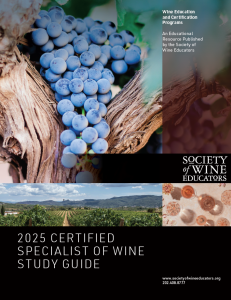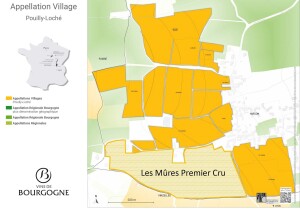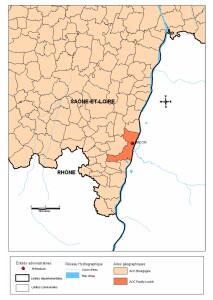 What do all of these items have in common: The Crystal Springs of Napa Valley AVA; an AVA for Beverly, Washington; a new-found respect for the Listán Prieto grape in Argentina; and newly-revised regulations for Austria’s Eisenberg DAC?
What do all of these items have in common: The Crystal Springs of Napa Valley AVA; an AVA for Beverly, Washington; a new-found respect for the Listán Prieto grape in Argentina; and newly-revised regulations for Austria’s Eisenberg DAC?
Answer: You’ll find all of these updates (and more) in the just-released 2025 version of the Certified Specialist of Wine (CSW) Study Guide and Workbook!
- Click here to find the 2025 CSW Study Guide on Amazon. The cost is $59.
- Click here to find the 2025 CSW Workbook on Amazon. The cost is $49.
CSW Exam Availability: CSW Exams based on the 2025 edition of the Study Guide will be available at Pearson VUE Testing Centers and via at-home, online proctoring beginning on January 2, 2025. Click here for more information on the timing and availability of CSW exams.
CSW Online Prep Course: Our next instructor-led CSW Online Prep Course is scheduled to begin the week of January 12, 2025. The aim of the prep course is to get attendees “as prepared as humanly possible” for a successful sitting of the CSW Exam. Online prep courses are available, free-of-charge, to Professional members of SWE who have a valid CSW Exam attendance credit.
Addendum: Click here to download a pdf of an addendum listing the substantive changes between the 2024 and 2025 versions of the CSW Study Guide: Addendum – CSW Study Guide 2025
Flashcards and Practice Quizzes: Our popular online flashcards and practice quizzes have also been updated for 2025 (while previous versions remain available as well). The cost for these products is $19 each. Click here for the digital flashcards and practice quizzes. Please note that this is a separate website from the SWE homepage and will require a separate login.
Click here for more information on the Certified Specialist of Wine (CSW) program.
The CSW Exam may be purchased via the SWE website: Click here to purchase the CSW Exam.
If you have any questions regarding these materials, please contact our Director of Education at jnickles@societyofwineeducators.org


